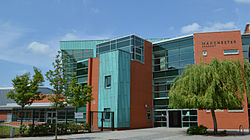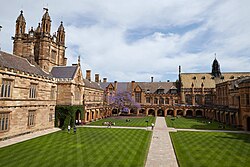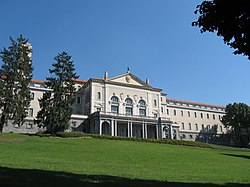Architecture

Educational architecture, school architecture or school building design is a specific practice of commercial architecture where the building design is focused for the primary purpose of educational instruction, such as schools and universities, as well as other educational institutions. The design of a building can significantly influence the learning experience of students. [3] Additionally, because schools are important sources of traffic, employment and community activities, school buildings often act as anchor institutions in neighborhoods or communities. [4] [5]
Various countries have gone through significant changes in philosophies associated with educational institutions, influenced by trends in investment by governments as well as larger changes in educational philosophy.





